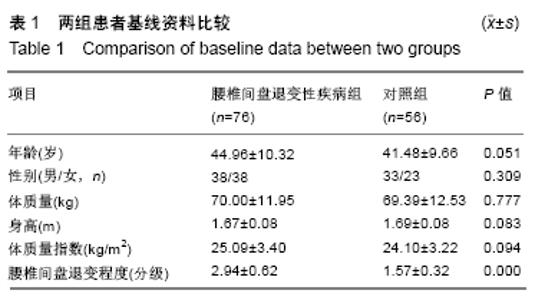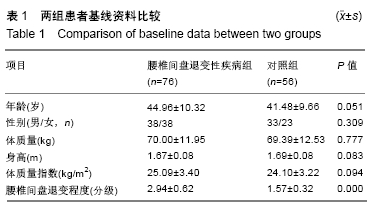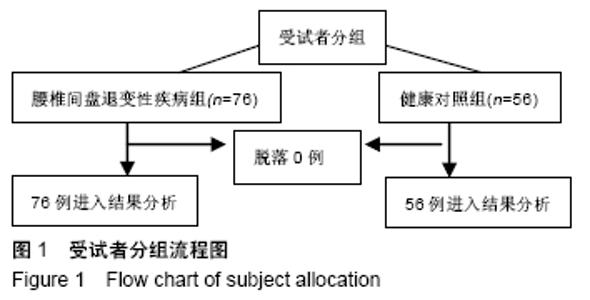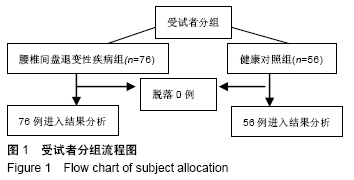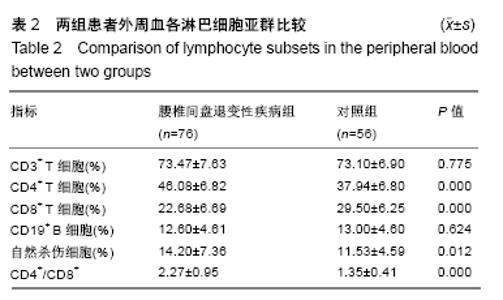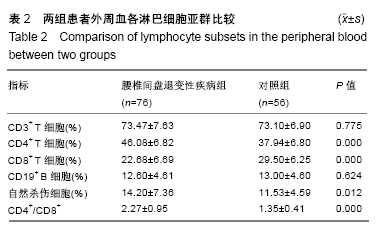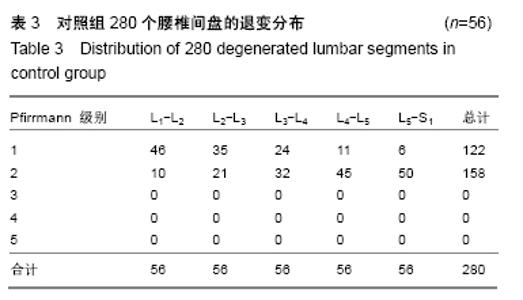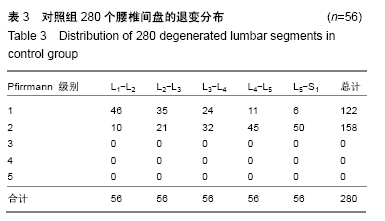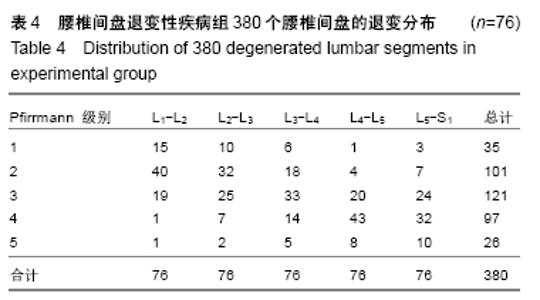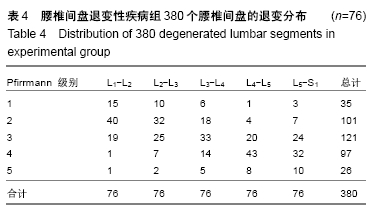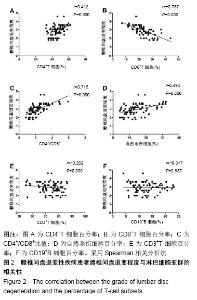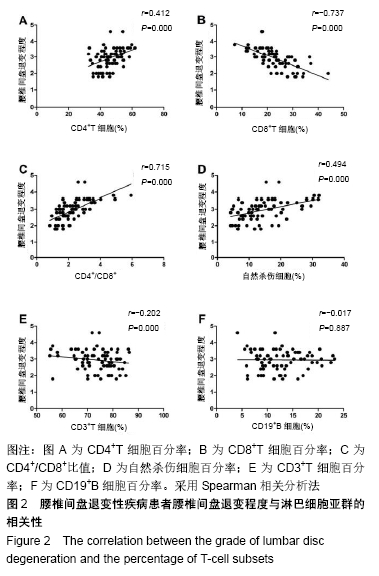[1] LIM TKY, ANDERSON KM, HARI P, et al. Evidence for a role of nerve injury in painful intervertebral disc degeneration:A cross-sectional proteomic analysis of human cerebrospinal fluid.J Pain. 2017;18(10):1253-1269.
[2] MASUDA K, LOTZ JC. New challenges for intervertebral disc treatment using regenerative medicine. Tissue Eng Part B Rev. 2010;16(1):147-158.
[3] WALTER BA, TORRE OM, LAUDIER D, et al. Form and function of the intervertebral disc in health and disease: A morphological and stain comparison study.J Anat. 2015; 227(6):707-716.
[4] GEISS A, LARSSON K, RYDEVIK B, et al. Autoimmune properties of nucleus pulposus: an experimental study in pigs.Spine (Phila Pa 1976). 2007;32(2):168-173.
[5] CAPOSSELA S, SCHLÄFLI P, BERTOLO A, et al. Degenerated human intervertebral discs contain autoantibodies against extracellular matrix proteins. Eur Cell Mater.2014;27:251-263.
[6] GEHA RS, LEUNG DY. Cellular abnormalities in patients with elevated serum IgE levels.J Allergy Clin Immunol.1986;78: 995-999.
[7] BURNET FM. A modification of Jerne’s theory of antibody production using the concept of clonal selection.CA Cancer J Clin.1976;26:119-12.
[8] DAVIES AJ, KIM HW, GONZALEZ-CANO R, et al. Natural killer cells degenerate intact sensory afferents following nerve injury.Cell.2019;176(4):716-728.
[9] POLI A, KMIECIK J, DOMINGUES O, et al. NK Cells in Central Nervous System Disorders.J Immunol. 2013;190(11): 5355-5362.
[10] MARTINS LC, ROCHA NP, TORRES KC, et al. Disease-specific expression of the serotonin-receptor 5-HT(2C) in natural killer cells in Alzheimer's dementia.J Neuroimmunol.2012;251(1-2):73-79.
[11] PFIRRMANN C, METZDORF A, ZANETTI M, et al. Magnetic resonance classification of lumbar intervertebral disc degeneration. Spine.2001; 26:1873-1878.
[12] ADAMS MA, ROUGHLEY PJ. What is Intervertebral Disc Degeneration, and What Causes It? Spine (Phila Pa 1976). 2006;31(18):2151-2161.
[13] GERTZBEIN SD, TILE M, GROSS A, et al. Autoimmunity in degenerative disc disease of the lumbar spine. Orthop Clin North Am. 1975;6(1):67-73.
[14] BOBECHKO WP, HIRSCH C. Auto-immune response to nucleus pulposus in the rabbit.J Bone Joint Surg Am. 1965; 47:574-80.
[15] MCCARRON RF, WIMPEE MW, HUDKINS PG, et al. The inflammatory effect of nucleus pulposus: a possible element in the pathogenesis of low-back pain.Spine (Phila Pa 1976). 1987;12:760-764.
[16] OLMARKER K, RYDEVIK B, NORDBORG C. Autologous nucleus pulposus induces neurophysiologic and histologic changes in porcine cauda nerve roots.Spine (Phila Pa 1976). 1993;18:1425-32.
[17] NAYLOR A. The biophysical and biochemical aspects of intervertebral disc herniation and degeneration.Ann R Coll Surg Engl. 1962;31:91-114.
[18] MURAI K, SAKAI D, NAKAMURA Y, et al. Primary immune system responders to nucleus pulposus cells: evidence for immune response in disc herniation.Eur Cell Mater. 2010; 19:13-21.
[19] GABR MA, JING L, HELBLING AR, et al. Interleukin-17 synergizes with IFNgamma or TNFalpha to promote infammatory mediator release and intercellular adhesion molecule-1 (ICAM-1) expression in human intervertebral disc cells.J Orthop Res. 2011;29(1):1-7.
[20] SHAMJI MF, SETTON LA, JARVIS W, et al. Proinflammatory cytokine expression profile in degenerated and herniated human intervertebral disc tissues. Arthritis Rheum. 2010; 62(7):1974-82.
[21] MIHN DC, KIM TY. Presence of various autoantibodies demonstrated by autoimmune target test in the sera of patients with degenerated and herniated intervertebral disc: comment on the article by Shamji et al. Arthritis Rheum. 2011;63(3):862.
[22] 张海平,张烽,姚羽.腰椎间盘突出髓核的自身免疫性[J].中国组织工程研究,2012,16(48):8931-8937.
[23] 刘振刚,卢一生,施建东,等.腰椎间盘突出症和椎间盘源性疼痛的免疫病理学研究[J].颈腰痛杂志,2016, 37(4):272-275.
[24] VIRRI J, GRÖNBLAD M, SEITSALO S, et al. Comparison of the prevalence of inflammatory cells in subtypes of disc herniations and associations with straight leg raising. Spine. 2001;26:2311-2315.
[25] ARAI Y, YASUMA T, SHITOTO K, et al. Immunohistological study of intervertebral disc herniation of lumbar spine.J Orthop Sci. 2000;5(3):229-231.
[26] STOCKINGER B, BOURGEOIS C, KASSIOTIS G. CD4+ memory T cells: functional differentiation and homeostasis.Immunol Rev. 2006;211:39-48.
[27] KAWAGUCHI S, YAMASHITA T, YOKOGUSHI K, et al. Immunophenotypic analysis of the inflammatory infiltrates in herniated intervertebral discs.Spine (Phila Pa 1976). 2001;26: 1209-1214.
[28] SATOH K, KONNO S, NISHIYAMA K, et al. Presence and distribution of antigenantibody complexes in the herniated nucleus pulposus.Spine (Phila Pa 1976).1999;24:1980-1984.
[29] TIAN P,MA XL,WANG T,et al.Correlation between radiculalgia and counts of T lymphocyte subsets in the peripheral blood of patients with lumbar disc herniation.Orthop Surg. 2009;1: 317-321.
[30] MA XL, TIAN P, WANG T, et al. A study of the relationship between type of lumbar disc herniation, straight leg raising test and peripheral T lymphocytes.Orthop Surg.2010;2:52-7.
[31] 余迪霞,吴建贤,翟志敏,等. 腰椎间盘突出症患者外周血T淋巴细胞亚群水平变化及其意义[J].安徽医学,2013, 34(5):537-542.
[32] 马信龙,徐云强,张义修,等.腰椎间盘突出症自身免疫因素的研究[J].中国现代神经疾病杂志,2004,4(5):291-296.
[33] VIVIER E, TOMASELLO E, BARATIN M, et al. Functions of natural killer cells.Nat Immunol 2008;9:503-510.
[34] VIVIER E, RAULET DH, MORETTA A, et al. Innate or adaptive immunity? The example of natural killer cells. Science. 2011;331:44-49.
[35] ZHANG C, ZHANG J, TIAN Z. The regulatory effect of natural killer cells: do “NK-reg cells” exist? Cell Mol Immunol. 2006;3: 241-254.
[36] WEILER C, NERLICH AG, BACHMEIER BE, et al. Expression and distribution of tumor necrosis factor alpha in human lumbar intervertebral discs: a study in surgical specimen and autopsy controls.Spine (Phila Pa 1976). 2005;30(1):44-53; discussion 54.
[37] 安志辉,丁文元,张剑刚,等.退变性腰椎侧凸TNF-α 基因多态性和蛋白表达水平的相关究[J].中国骨与关节杂志, 2012,1(4): 381-387.
[38] 王亮,张照宏.趋化因子CXCL10( IP- 10)、MMP-1及TNF-α与腰椎间盘突出症的相关性研究[J].山东医学高等专科学校学报, 2015,37( 6):445-447.
[39] ABDOLLAHZADE S, HANAEI S, SADR M, et al. Significant association of TNF-α,but not other pro-inflammatory cytokines, single nucleotide polymorphisms with intervertebral disc degeneration in Iranian population.Clin Neurol Neurosurg. 2018;173:77-83.
[40] 曹涌,姚羽,张烽.腰椎间盘突出症与Th细胞、NK细胞的相关性研究[J].中国脊柱脊髓杂志,2013;23(10):912-915.
[41] YOSHIMURA N, DENNISON E, WILMAN C, et al. Epidemiology of chronic disc degeneration and osteoarthritis of the lumbar spine in Britain and Japan: a comparative study. J Rheumatol 2000;27:429-433.
|
